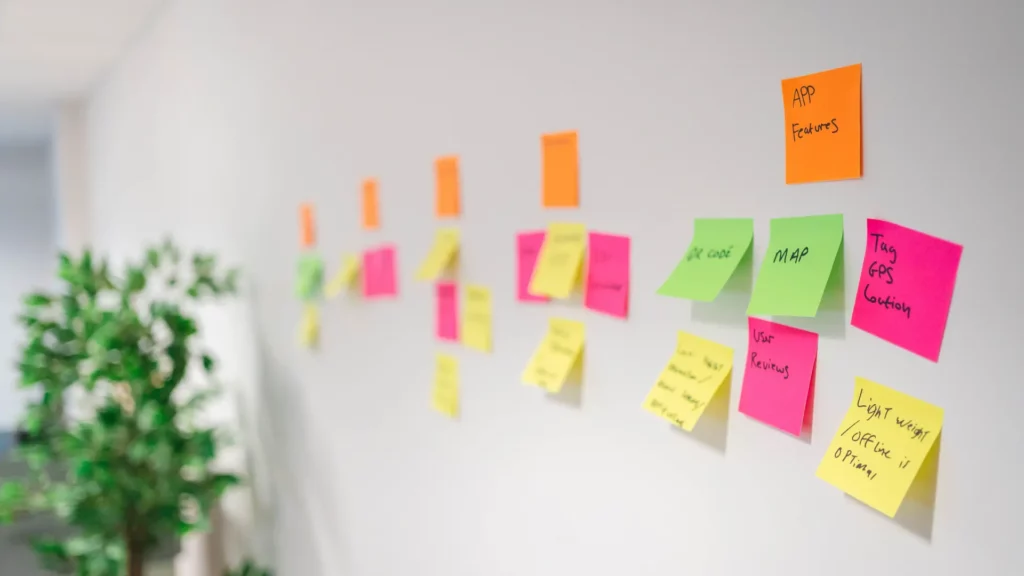
User-Centred Design: Debunking Myths and Boosting Your ROI
User-centred design puts the user at the centre of the design process. In this insight, we debunk myths of UCD and how it boosts your ROI.

Stay in the loop with our latest updates
Today, we’re going to navigate the world of user-centred design (UCD). You might be wondering, “What if everything I know is wrong?” Relax, grab a cup of coffee (or tea), and let’s debunk some misconceptions and shine a new light on this remarkable concept.
What is user-centred design?
First things first, what is user-centred design, or UCD, for those who love acronyms? Simply put, UCD is a design philosophy that puts the user at the centre of the design process. It emphasises understanding users’ needs, behaviours, and the context of the product used to deliver a user experience that is intuitive, efficient, and enjoyable.
Let’s take a trip through the UCD universe and realign your design compass.
Myth 1: UCD is just about usability testing
No, no, no! UCD is so much more than just usability testing. Sure, usability testing is vital to the UCD process, but it’s not the whole picture. UCD starts long before usability testing and includes understanding user needs, creating user personas, designing wireframes, and creating prototypes. Then, and only then, comes usability testing. UCD is a holistic process that involves a wide range of activities to ensure the end product is user-friendly.
Myth 2: UCD means you have to do exactly what users say
If you’ve been practising UCD as a matter of simply asking users what they want and then delivering it, you might be in for a surprise. Not everything a user suggests is practical, beneficial, or even possible. The true essence of UCD lies in understanding the needs behind what users say, interpreting them through a designer’s lens, and creatively delivering solutions.
Myth 3: UCD is a one-size-fits-all approach
Contrary to this popular belief, UCD is not a one-size-fits-all method. It’s more like a tailored suit that fits your design needs perfectly. The UCD process can and should be adapted depending on the project’s specific needs. The key is maintaining the user at the centre of the process, whether it’s a software application or a potato peeler.
Myth 4: UCD is expensive and time-consuming
This is one of those half-truths that need clarification. Initially, UCD might seem like it requires more resources. However, when you factor in the reduced need for redesigns, lower maintenance costs, and happier customers, the initial investment in UCD proves to be a wise one. Remember the old saying, “Measure twice, cut once”? That’s UCD in a nutshell!
Now that we’ve cleared the air about some common misconceptions, let’s talk about some of the benefits of UCD and why it’s worth investing time and resources.
Benefits of user-centred design
1. Increased user satisfaction: This one is a no-brainer. If you create a product with the user in mind, they’re more likely to enjoy using it. Satisfied users mean positive reviews, word-of-mouth recommendations, and repeat business.
2. Reduced development costs: Yes, you read it right! UCD can help reduce development costs in the long run. By identifying potential issues early in the design process, you can avoid costly redesigns or fixes later.
3. Improved productivity: A well-designed product makes the user’s life easier, allowing them to complete tasks quickly and efficiently. This leads to increased productivity, especially for products used in professional contexts.
4. Greater market share: A product that is easy to use and meets users’ needs is more likely to gain a larger market share. After all, who wouldn’t choose a product that makes their life easier?
5. Lower support costs: A product designed with UCD principles is intuitive and easy to use, reducing the need for customer support. And fewer support calls mean lower support costs. It’s a win-win!
So, there you have it! A fresh look at user-centred design. It’s about time we ditched these misconceptions and embraced the true essence of UCD.
“Design is not just what it looks like and feels like. Design is how it works.”
UCD is not about expensive usability tests, slavishly following user suggestions or a rigid, one-size-fits-all process. Instead, it’s about understanding our users, interpreting their needs through a creative lens, and delivering a tailored, efficient, and enjoyable product.
Remember, it’s never about being right or wrong – it’s about learning, growing, and designing with empathy. After all, as Steve Jobs said, “Design is not just what it looks like and feels like. Design is how it works.”
Here’s to putting users at the heart of our design process! If you want to know more about UCD and talk to our team, feel free to reach out: [email protected]
Happy designing, folks!

Let’s get started!
Great digital products aren’t just built, they’re co-created. Together, let’s breathe life into your idea, crafting solutions that stand out.
Contact

